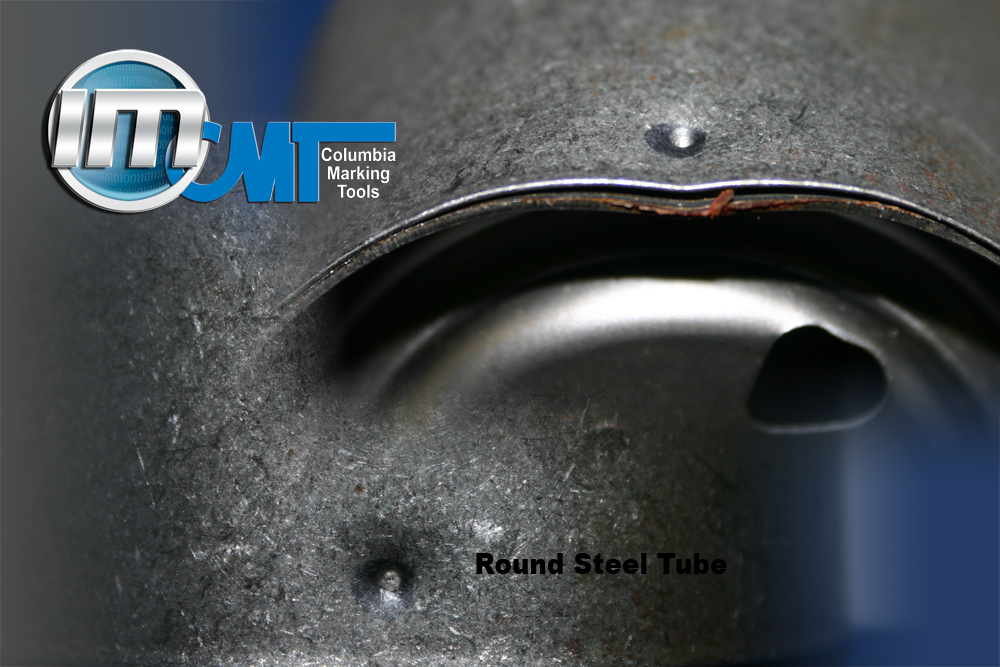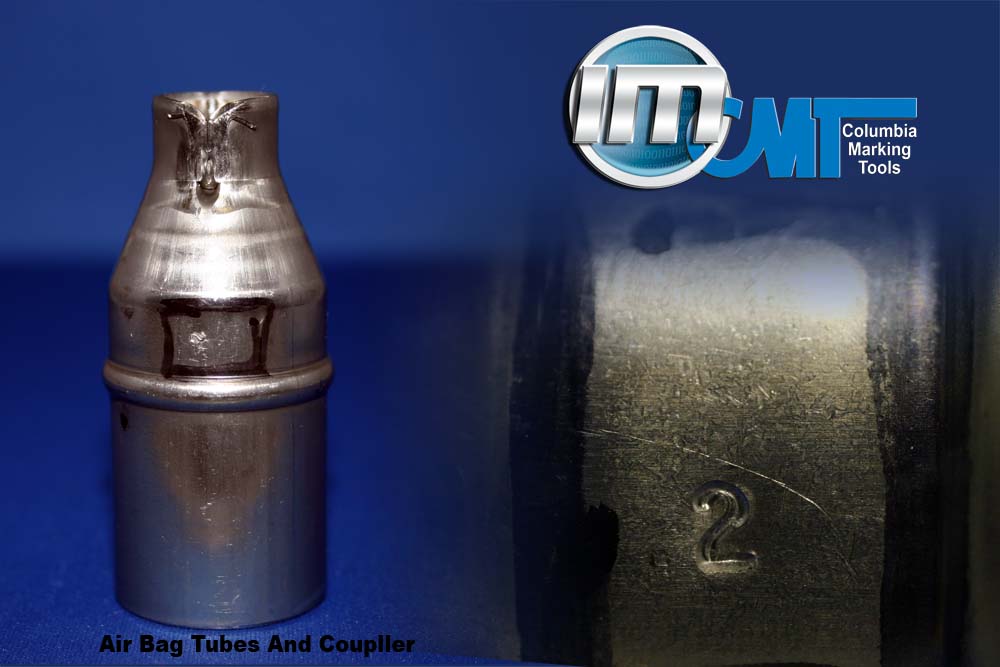CMT Air Impact markers used for more than marking – example#1
CMT air impact markers hold a special function in the impact marking field for their compact and forceful design. The ability to generate the power to indent steel characters in a variety of metals in a reduced footprint has been a valuable tool for machine tool builders for over half a century. Can this instantaneous force be used for more than marking?
A number of assembly and metal working processes use a hammering technique. These include: dimpling, crimping, seating, staking, de-flashing ect. Of course, these processes can be simply created with the use of standard air or hydraulic cylinders and others methods of generating force. Sometimes there are elements of the application that require the designer to look for alternatives to the standard force generators. These include: time, space, cost, and delivery.

The process of indenting an aluminum frame in an assembly operation was required in an automated production cell. The cell has restricted floor space. Also, like many projects there were also financial restrictions. The force required to indent the frame was 6,000 lbs. Normally, this would require a sizable cylinder and the additional space and cost.

CMT suggested the 3 ton double acting air impact marker the model 288. The system was tested with a conical 90 degree punch tool. The air pressure was set at 80 psi. The resulting impact provided a dimple through the material to assembly two parts of the frame together.
Columbia Marking Tools has a complete line of air impact markers. These air tools have been designed to provide the maximum impact in a restricted space. Therefore, this tooling has applications beyond marking.

